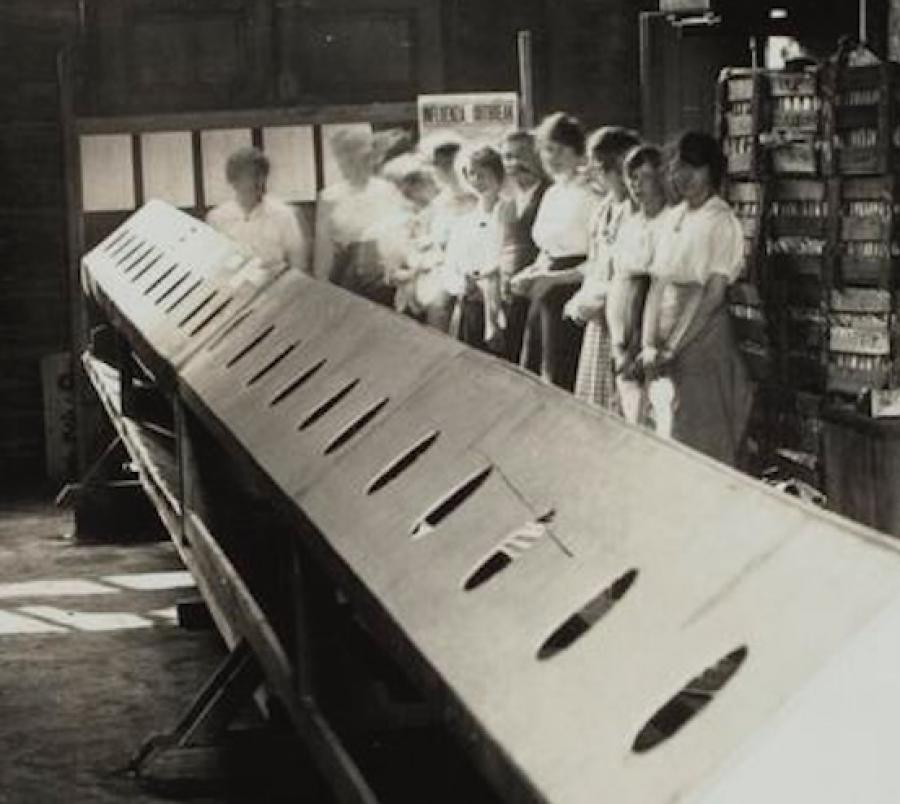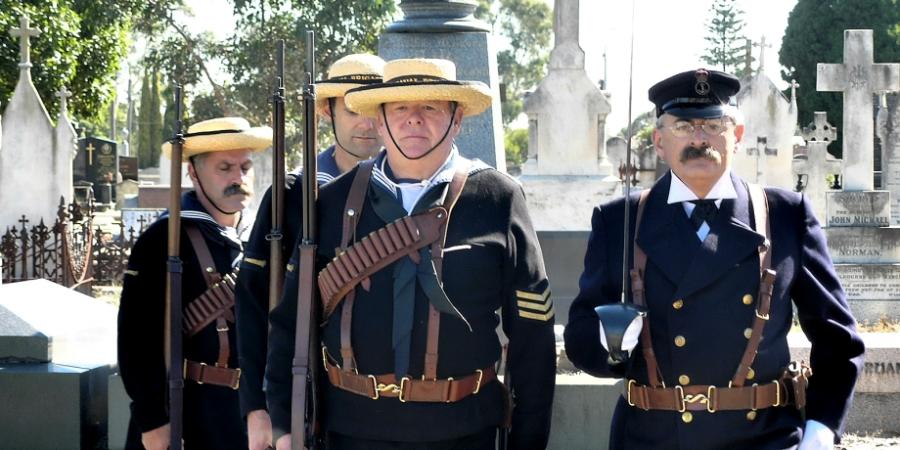GSV avoids the "INHALATORIUM" and zooms online

Just as so much of our family history resource material is now online, so the GSV has been using these 'distancing' times to develop its online delivery of services.
We can be thankful that our new ways of working will spare us from "THE INHALATORIUM" - which was used to give 'Kodak' employees protection against the influenza epidemic in 1919, as this newspaper article described (Australasian, 15 February 1919):
THE "INHALATORIUM" IN USE.
The Kodak Company has opened an inhalatorium as a means of protection of its employees against the influenza epidemic. The chamber at present in use will accommodate 20 persons at a time. It consists of a raised structure 16ft. long, 2ft. wide at the bottom, and 2ft. from the apex of the gable to the base, which is left open. In each sloping side of the roof there are 10 oval holes, about 6in. by 4in., under 30lb. pressure, carrying sulphate of zinc in solution, is then released into the box from sprays in a pipe running along the base, and the people receiving treatment breathe it in. It disinfects their throats and air passages. This treatment is administered twice a day for about four minutes at a time.
"A MODEL INHALATORIUM IN MELBOURNE." The Australasian (Melbourne, Vic. : 1864 - 1946) 15 February 1919: 50. Web. 31 May 2020 <http://nla.gov.au/nla.news-article140218675>.
Though our library remains closed for the time being, we are bringing our services to you. Access to databases, podcasts and webinars are available for members from home. Our journal for June has been delivered for the first time as a flipbook via our website. Members are starting to use the membershelpmembers forum to ask others for advice about their research and now various groups are meeting using Zoom.
Scottish Assistance Day 'in the library' was very successfully delivered at a distance by John Blackwood. John reported that:
The whole thing went extremely well. Normally, I would have up to about three people come into the library for Scottish Assistance day, but there has been the odd time when no-one came in. I reckoned I could do it online, so we advertised it for 30-minute time slots for the day. It was booked out within a day. So, I opened a second day, and that too was booked out straight away. In total, I assisted 12 people variously using Zoom, Facetime, and Skype. Everybody said they got something out of it. Most of them rarely, if ever, come into the library; one lady lives in Canberra. Most of them wanted it to happen more often, including a request that we do it for Discussion Circles.
The London Discussion Circle last week 'met' on Zoom and the Writers Circle is plunging online this coming week to discuss recent writing by two of its members. Writers can be big talkers too (but there is a mute button!)
This way of working could help reduce our office rental costs in future! Though I am sure small groups of us may still meet for a coffee without mute buttons!
Tomorrow we launch our APPEAL FOR DONATIONS.
We need your help.
***
Image: Museum Victoria Courtesy of Kodak Australasia (unknown photopgraper) . MM 140271





 Finding new premises then moving has not been easy especially with Covid restrictions but everything has gone smoothly, thanks entirely to the months of planning and effort by our Councillors and other volunteers. They have been fantastic.
Finding new premises then moving has not been easy especially with Covid restrictions but everything has gone smoothly, thanks entirely to the months of planning and effort by our Councillors and other volunteers. They have been fantastic. 








 The purpose of the research is to investigate the use, role and impact of DNA testing in exploring and understanding individual national and global histories and identities. This study is an Australian-first and will provide an exciting opportunity to be involved in a new worldwide project about exploring the past.
The purpose of the research is to investigate the use, role and impact of DNA testing in exploring and understanding individual national and global histories and identities. This study is an Australian-first and will provide an exciting opportunity to be involved in a new worldwide project about exploring the past.